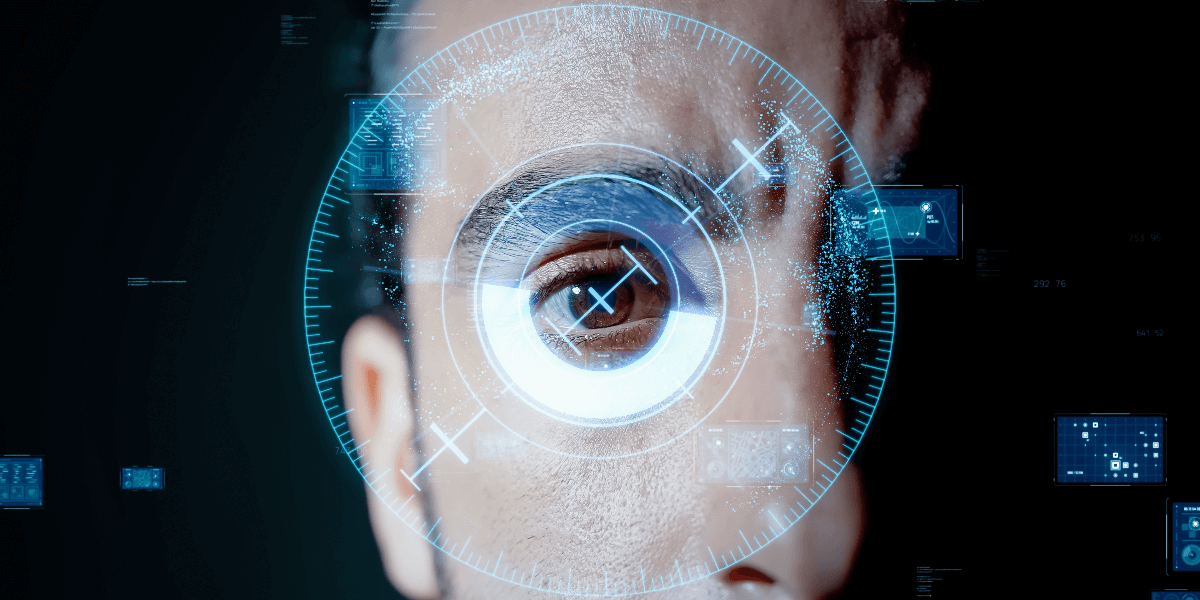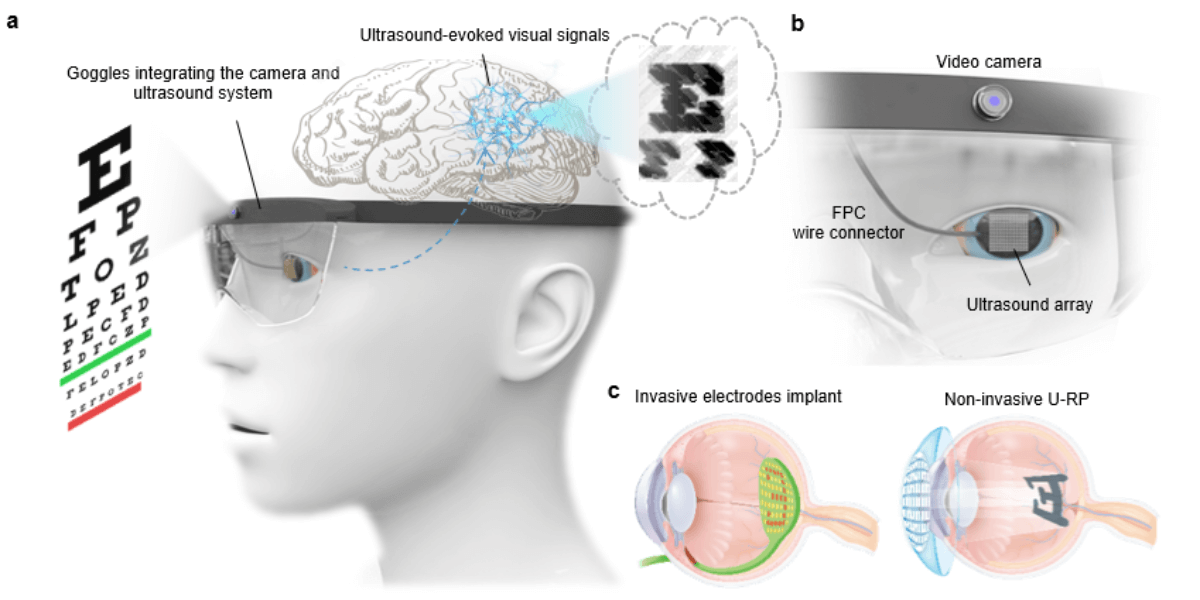
PHOTO CREDIT: ISTOCK
In the early 20th century, the invention of ultrasound revolutionized medical imaging, giving doctors a new way to look inside the human body. Now, over a century later, a team of researchers in the USC Viterbi School of Engineering’s Alfred E. Mann Department of Biomedical Engineering is taking ultrasound technology to new heights, using it not just to see within the body but to restore sight itself.
It all began with a surprising discovery: the same technology used in ultrasound scans could be harnessed to create non-invasive retinal prostheses.
The Spark of Innovation
Picture this: A blind man sees the outline of his loved one’s face for the first time in years, not through his eyes, but through the gentle hum of ultrasound waves — high frequency sound waves that can be heard by bats and dolphins, but not by human beings.
This isn’t a scene from a sci-fi movie; it’s the future that USC Viterbi professor Qifa Zhou’s team, together with USC Keck School of Medicine professors Mark S. Humayun and Biju Thomas, along with Dr. Gengxi Lu, are working towards. Led by Zhou, a professor of biomedical engineering and ophthalmology and recent recipient of the USC Viterbi 2024 Use-Inspired Research Award for his work on this project, the team is building upon their previous research, testing a wider variety of complex visual stimuli to offer new hope to those suffering from photoreceptor degeneration, a leading cause of blindness.
Their work, recently published in Nature Communications, shows that ultrasound can stimulate the retina to send visual signals to the brain, effectively restoring sight.

Ultrasound technology can be combined with AR glasses to create mobile, comfortable, and non-invasive protheses for day-to-day use.
From Sound to Sight
Cited as one of the most prevalent causes of visual impairment, photoreceptor degeneration heavily damages crucial light-detecting cells known as photoreceptors in the eye. Throughout time, degraded photoreceptors can cause irreparable loss of vision. Simply put: when photoreceptors fail to detect light, the brain will fail to create visuals.
But what if there was a way to bypass these damaged cells using sound? That’s exactly what USC Viterbi researchers have achieved with their retinal prosthesis technology that is capable of manually triggering the retina in place of damaged photoreceptors.
“This technology can be seen as an expensive speaker,” said Chen Gong, a Ph.D. student at USC Viterbi and co-first author of the the research paper. “Positioned to be worn in front of the user’s eyes, this non-invasive technology functions by emitting an array of ultrasound waves that exert pressure on the eye and stimulate the retina. The stimulated retina will then send signals to the brain to form visuals.”
Testing the Waters
To test their device, the team conducted experiments on blind and sighted rats. By depriving the rats of water, researchers were able to condition (or motivate) the rats to drink water upon their detection of visual symbols through either ultrasound or light stimulation. For example, seeing rats were motivated to drink water when they detected a symbol through light stimulation. Similarly, blind rats were motivated to drink water when they detected a symbol through ultrasound stimulation. This method allowed researchers to discover that both seeing rats and blind rats reacted similarly to light and ultrasound stimulation; both groups drank water upon stimulation, whether it be light or ultrasound.
The researchers confirmed that focused ultrasound not only stimulated neural activity in the blind rats’ brains, but also enabled them to create visualizations of nuanced symbols. When shown symbols like ‘U’, ‘S’, or ‘C’, blind rats were able to form visualizations similar to those seen by their sighted counterparts. This discovery is immense, as the team’s previous study tested the rats’ ability to visualize one symbol. By testing various symbols, it confirmed that the rats were able to develop visualizations of a diverse array of stimuli.
“We used an electrode to track the rats’ neural response,” Gong said. By monitoring neural activity in the rats’ visual cortex, it was confirmed that the rats successfully visualized the stimuli presented to them through focused ultrasound.
These new findings provide a glimpse into the advantages and precision that ultrasound can bring to the medical industry, refined and focused treatment, diagnosis and more.
The Road Ahead
Though the retina prosthesis has been tested and utilized in clinical settings, ultrasound technology remains cumbersome for day-to-day use.
“It’s not comfortable to wear for the normal person,” Gong stated.
However, various ultrasound technologies are currently being developed and adapted in more compact and convenient forms such as augmented reality (AR) glasses. When these ultrasound retina prostheses are developed for everyday use, they can radically change the scope of visual aids. In fact, this technology may not only be beneficial to those with visual impairments; anybody could wear AR glasses for convenience in their daily lives.
“If we can develop the transparent transducer, it will not block our vision,” explained Gong. “The transparent transducer would be as clear as a pane of glass but would transmit ultrasound waves into the user’s eyes. These transducers would be set into AR glasses that can be worn comfortably in everyday settings and can display notes, texts, and even directions for the user even when they are away from their mobile devices. We do not need to pick up the phone since the AR glasses would just display it in front of our eyes.”
Seeing the Future
Additionally, the findings of this research paper may serve as the foundations to develop prostheses that may enable those with visual impairments to see color.
“For the next step, we are going to figure out what kind of ultrasound frequency or combination of wavelengths can let us see more color,” Gong explained.
Hoping to contribute to the creation of mobile ultrasound devices, the team filed a new patent in 2023 for what could become a key component in future non-invasive ultrasound retinal prostheses. The team now has two pending patents intended to further ultrasound technologies within the medical industry, advancing a new frontier of precise and non-invasive treatment.
As USC Viterbi researchers continue to push the boundaries of what’s possible, their work represents a significant leap forward in medical science. This innovative approach could soon transform the lives of millions, offering a clearer, brighter future through the unexpected power of ultrasound.
Published on June 27th, 2024
Last updated on June 28th, 2024







